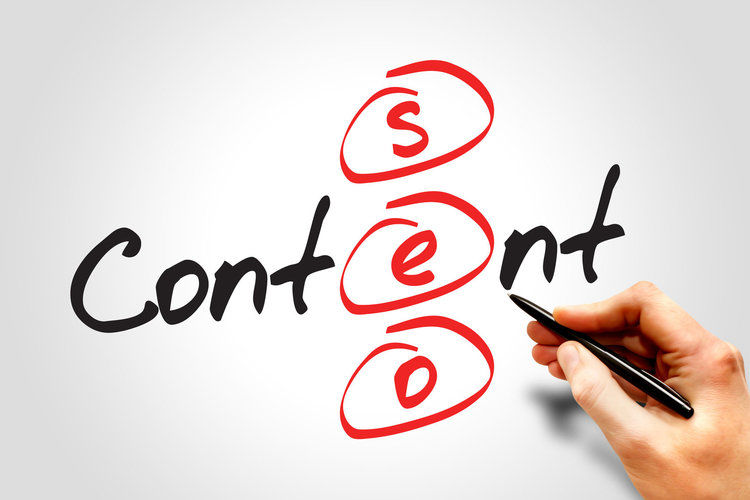H1: The Simpler Side of SEO—Things You Can Do Quickly and Do Right Now, Part 2: The Visible Content
In Part 1 of this series, we looked at how to make the most of meta tags and other working parts behind the scenes. Stepping now in front of the curtain, we can tackle the content that is visible to your readers and implement ways to make it easier to digest for both humans and robots alike. These tips can and should be applied to all types of pages on your site, whether it’s your home page, a product page, or a blog page.
- Structure Your Content Like a 5-Paragraph Essay
- Headline Hierarchy
- Key Words and Phrases
- Speaking of Images
- The Problem of Hidden Content
Advertisement
H2: Structure Your Content Like a 5-Paragraph Essay
Remember when you were first learning to write essays in school? The most basic essay has five paragraphs: An introduction, three supporting paragraphs, and a conclusion. Very simple and straight to the point. The intro states what you want your reader to know and offers a glimpse into the support that will follow. You then support your statement with evidence, wrap it up with a conclusion, and ask the reader to do something. There you have it. A solid performance model for your web pages. Keep it simple and easy to follow and your readers will thank you, your content will be shared, and the bots will index the content properly.
Of course, I’m not advocating that each page have a 5-paragraph essay. Rather, start with a bold headline and backup that bold statement with whatever details work, whether they are images and infographics or testimonials and links to further detailed pages. Finish with a strong call to action and guide your reader into that next step you want them to take.
H2: Headline Hierarchy
Look at the headlines and headers seen on this page. The headline at the top is the largest and most prominent. That headline uses the H1 header tag. Each successive header on this page uses the H2 header tag (going back to Part 1, you will also see a 3rd and 4th level of header tags in use). Breaking up your content into identifiable chunks makes scanning and reading easier for all of us humans. But wait, there’s more! Using a hierarchy of headline tags creates a semantic structure that tells the indexing robots how information is divided and displayed. It makes sense to both organic and electronic brains.
The headline hierarchy delivers clear signals as to how to index the content of your page. Use the H1 tag to provide the highest level headline—and do limit yourself to one H1 tag, please, or it may confuse the robots. Your content should then be written and structured so that the hierarchy of headlines can be used. The hierarchy creates an outline of the content seen on the page, easier for readers to follow and easier for site-indexing robots to follow. It’s a win-win for everyone (and everything).
H2: Key Words and Phrases
Now we are getting to the heart of the matter. What key words and phrases are your potential customers searching for? A solid keyword/phrase analysis for your business sector is most definitely warranted. We can talk more of that in another article. For now, let’s stick with what you want to do (and what you don’t want to do) with your keywords and phrases.
Remember in Part 1 how we decided it was bad to stuff a bunch of keywords into the meta keywords tag? The same advice applies here. You do NOT want to cram as many keywords into your articles as possible. Instead, you want to write solid content that is helpful to your customers. Write answers to common questions. Write about your products and services and how they solve a problem for your customers. Yes, use your keywords and phrases in these articles, but use them appropriately in context. Use them conversationally so that when someone uses voice search on Google, your content is the answer to that conversational search. Use variations of your keywords and phrases to capture the different ways customers will search for the same products and services. And always remember that while a bot is doing the indexing, a human is doing the searching. As an example, a human will search for “how do I train my dog to sit” rather than “canine pet training.” Think like a human and write your copy for humans. Keep it structured properly, and the bots will index it properly.
Advertisement
H2: Speaking of Images
Images speak volumes, way louder than mere words. Right? Yes, right. To humans. And only to humans. They say absolutely nothing to indexing robots. Total, complete, absolute silence. Unless, that is, you provide an alt text entry for each image. Originally, alt text tagging was for screen readers that didn’t show images. Instead of the image, text describing the image would be shown in its place. This is still true, yes, but this is also a wonderful place where you can add keywords and phrases that are appropriate to the image and the content surrounding the image. Alt text for images actually carries quite a bit of weight in keyword ranking, we’re finding. Keep the text brief and concise and it will support your structured content.
And don’t forget that the image filename is also indexed. Use your company name and appropriate keywords—all separated by dashes—in your image filenames and you’ll find your branded images begin showing up in contextual image searches! In many website CMS platforms, the filename in place when uploading stays forever. Name your files correctly before uploading for best practice in any CMS.
H2: The Problem of Hidden Content
Is there anything on your pages that is hidden from the bots? This may seem like an odd question, but if you are using Flash, JavaScript, images or even some PDFs to provide text on screen, Google will likely not read it. While they are getting better at it and some text is getting found, if you want it to be searchable, stick to HTML text. Your web developer can make just about anything happen using HTML and CSS these days. Make sure they aren’t using non-indexed media for visible text.
This question can also apply to anything that you have stored externally through a third party. If you use an e-newsletter service, keep an HTML version of your newsletter on your domain rather than linking to an archived version on your e-newsletter host’s site. Keep your content on your site and keep it crawlable.
H2: What’s Next?
Part 1 helped us get the behind the scenes data in place and now you are writing valuable content that is easy to digest for people and software alike. In Part 3 of the series, we will look at site structure as a whole and how navigational links and folder structures can help or harm your SEO efforts—and how we can make them all work in your favor.
If you’d like to learn more about how TheChatterBox Guys can help write strong SEO optimized content for your website, contact me today!
Advertisement

